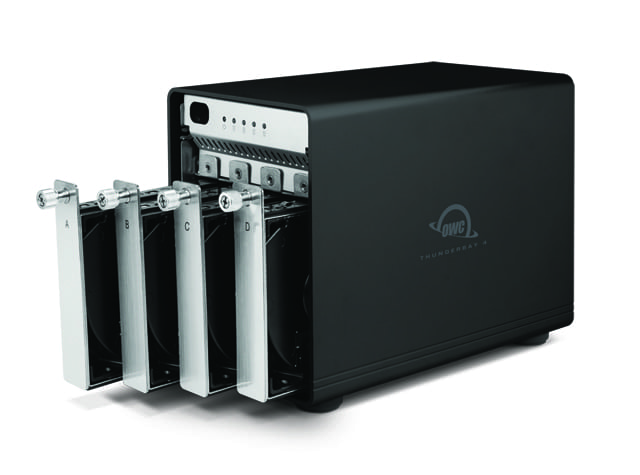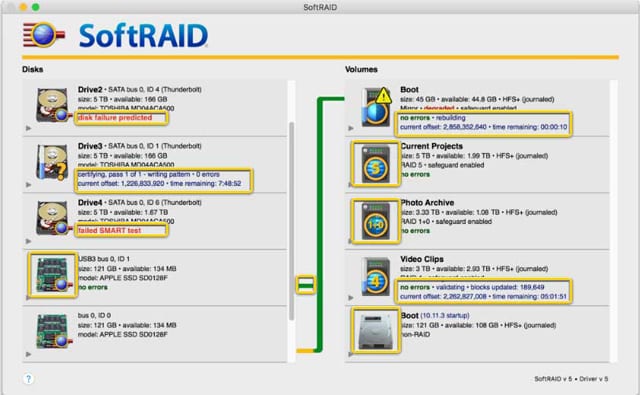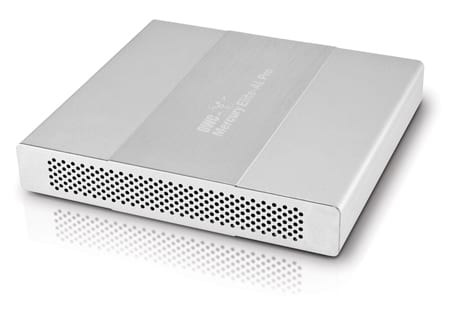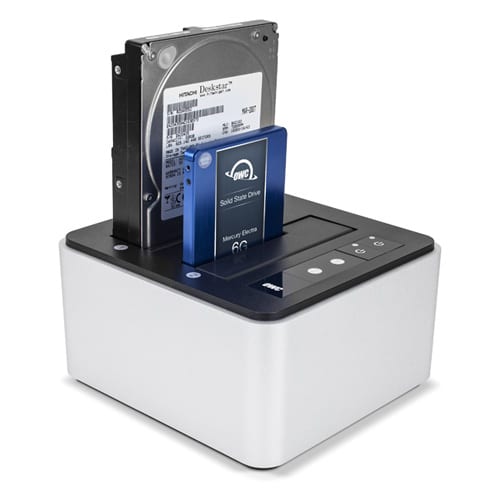Editor’s Note: OWC will be attending the 2018 Sundance Film Festival. Ahead of the festival, the Rocket Yard will share a series of articles related to all things filmmaking.
Filmmakers may have some of the most demanding needs for storage, with their requirements for balancing speed, throughput, density, portability, reliability, and, of course, cost. And that’s just for the studio. Similar concerns are present at every phase of a filmmaker’s workflow.

And it’s not just the pros shooting with the latest RED or ALEXA cameras at 8K, 60 fps; even those making use of their DSLR or smartphone to shoot video have to make similar tradeoffs when they choose their storage solutions. One hour of footage using RED Raw 4K at 24 fps is going to need about 127 GB of space, and that’s just for storing raw footage from a single camera. Imagine the space needs when you consider multiple camera sources, audio, stills, multiple layers, and scratch space. If you’re shooting 1080p, that may drop down to 17 GB of space for one hour of raw footage per camera. But no matter what format you’re shooting, the eventual total space you’ll need for storage can be quite large.
This is a good time to be looking for upgrades to storage needs. Drive sizes are increasing, performance and reliability are improving, and there’s bound to be a storage option that meets your needs, either solid state drives, rotational hard drives, or a combination of the two.
External Solutions
External storage systems are the most common solution to meet storage needs. They’re available in a number of interfaces; USB 3.1, USB 3.1 gen 2, Thunderbolt 2, and Thunderbolt 3 are the most common ones used for video and film production.

It’s hard to beat Thunderbolt 3 for raw performance. Its raw speed makes it a great choice for high-performance data storage. A good example of high-performance storage solution is the ThunderBlade. This high speed (2800 MB/s Read, 2450 MB/s Write) external SSD blade is housed in a ruggedized case, making it a great choice for work on location, as well as back in your studio. Available in sizes from 1TB to 8TB, this single drive can meet the needs of your next film project.
If a bus-powered portable is what you need, the Envoy Pro EX Thunderbolt 3 comes in a rugged case designed for fieldwork. At 2600 MB/s Read and 1600 MB/s Write, this high-performance wonder can fit in your pocket and has the speed to not impede your workflow when offloading footage from your cameras, or serving as storage for field editing needs. It’s available in 1TB and 2TB configurations.
Thunderbolt has always worked well as the host interface for multi-bay RAID enclosures, and this holds true for the newest in the ThunderBay lineup, the ThunderBay 4 Thunderbolt 3. Using a Thunderbolt 3 interface, the ThunderBay 4 Thunderbolt 3 provides 4 bays that can house SSDs, hard drives, or a combination of the two.
If you’ve worked with RAID arrays before, then it’s likely you made use of RAID 0 to stripe one or more drives together for increased speed. Of course, striped arrays suffer from reliability issues; specifically, if one drive fails in any way, the data on all striped drives is lost.

Using a 4-bay RAID enclosure like the ThunderBay 4, along with SoftRAID, the best RAID utility for the Mac, allows you to configure the ThunderBay 4 enclosure as a RAID 10 array, striping the data across a pair of mirrors (RAID 1). This provides the performance of a two-drive stripe with the data redundancy of a pair of mirrors. Another option supported by SoftRAID is to use all four drives in a RAID 5 configuration. The advantage of RAID 5 is that all four disks are striped together, providing high-speed data access while also distributing a parity bit across all of the disks. The results are a RAID system that can recover from any single drive failure.

Another option is to make use of external drives with USB 3.1 Gen 2 interface. This type of interface supports speeds up to 10 Gb/s, equivalent to the speeds of the original Thunderbolt interface, but at a fraction of the cost. To get the most out of this type of connection, the OWC Mercury Elite Pro Dual mini gives you two 2.5-inch bays each with a SATA 3 (6 Gb/s) connection.

The Mercury Elite Pro Dual mini supports hardware-based RAID 0, 1, and SPAN, as well as independent drive modes. This versatile enclosure allows you to build a storage system that will work great for film projects that aren’t pushing the technology.
Backups
We’ve mentioned using RAID 1 (mirror) and RAID 5 (parity) as a way to provide some data redundancy or protection against drive failure. But as you have undoubtedly heard many times, RAID in any form is not a backup solution. And backups in film and video production are an essential part of any workflow.
There are many spots along the workflow where backups are routinely performed. The raw camera footage is usually backed up before it’s used as source material for any editing. Daily edits or edit versions may be backed up. Backups may be made for off site storage. And backups are usually created before any client views/approves work in process.
The point is, there’s a big need for backup storage in any workflow you may use. And the storage type you choose is going to be dependent on the size of the backup storage you need, and the speed at which it needs to be performed. Often backups are relegated to the slowest interfaces, usually USB 3.1. This can work well for most backups, provided your workflow is well organized. But if you ever find yourself routinely waiting on a backup to be completed before you can proceed, you may want to consider a faster storage system.

The OWC Drive Dock provides a dual-bay hot swappable bare drive enclosure. This system lets you swap in bare 3.5-inch or 2.5-inch drives for different backup needs, and swap them out just as easily, without having to shut down. Available with Thunderbolt 3, USB 3.1, or both types of interfaces, you can configure this dock to meet just about any of your backup needs.
Internal Solutions
If you’re using a 2012 or earlier Mac Pro as your editing workstation, you have the advantage of 4 internal drive bays as well as multiple available PCIe expansion slots, any of which can be used to meet your storage needs.
The drive bays are ideal for housing backup drives as well as media library drives. If you need to increase drive performance, you could use SoftRAID, which we mentioned above, to create various RAID arrays using the 4 drive bays. Another choice is to use the PCIe slots with products like the OWC Accelsior S. With this card, you can mount any standard 2.5-inch SATA-based SSD and see up to 550 MB/s sustained performance.
If you need additional speed, the OWC Mercury Accelsior E2 can provide up to 820 MB/s sustained speed with a capacity up to 960 GB. The Accelsior E2 also includes 2 eSATA ports, allowing you to add two additional external drive enclosures.









